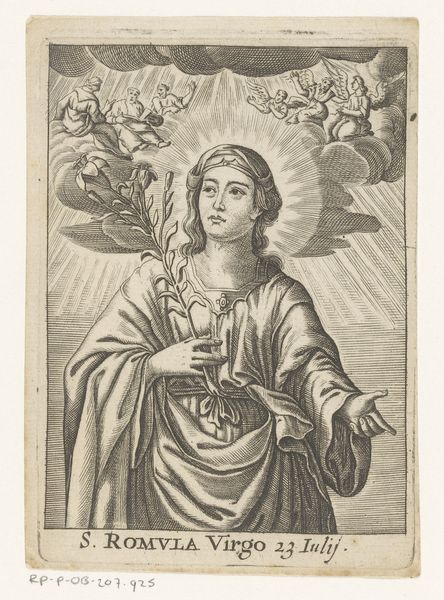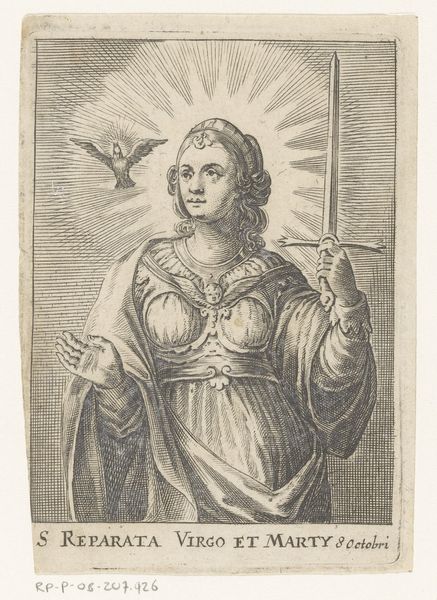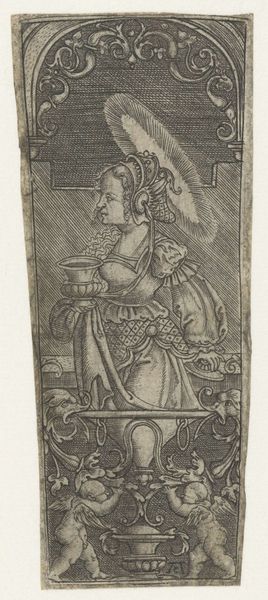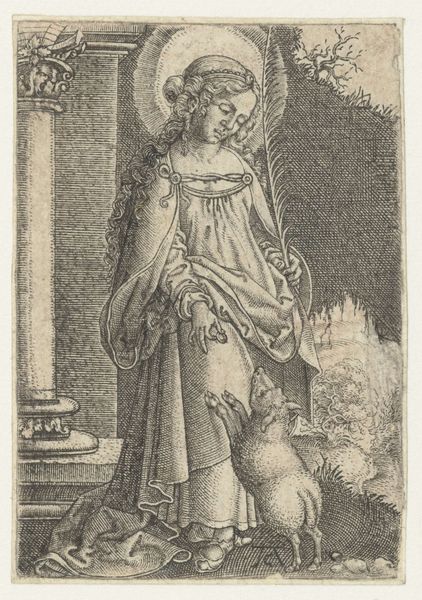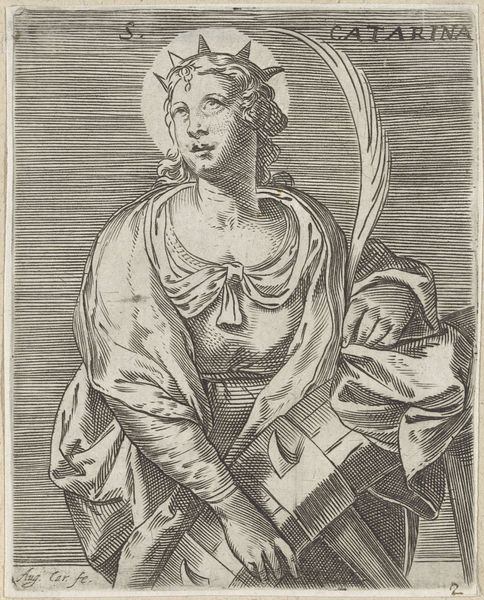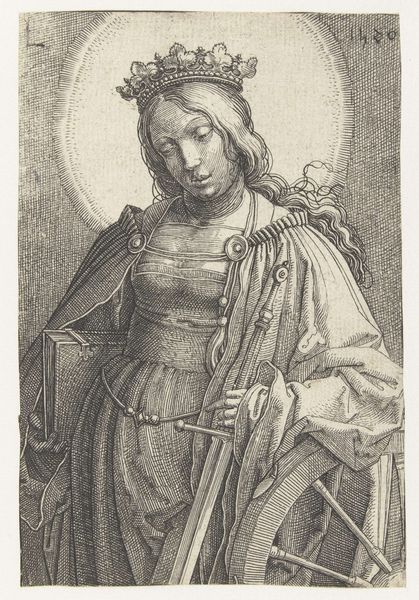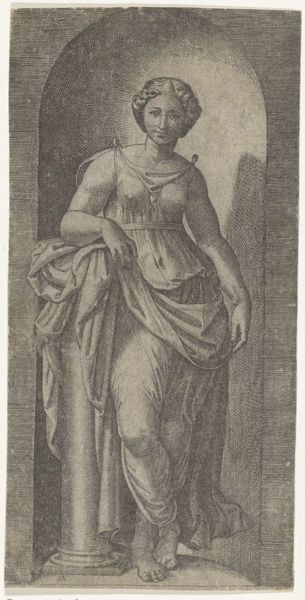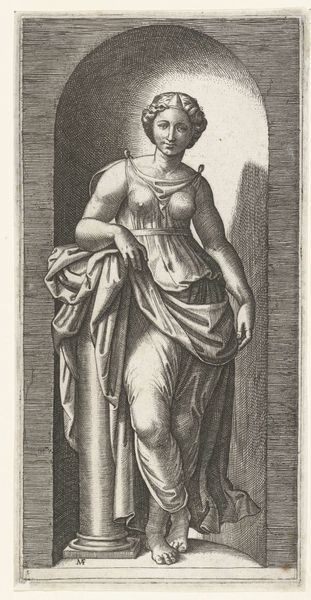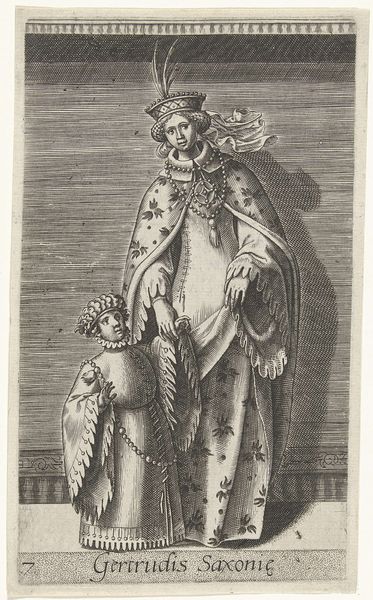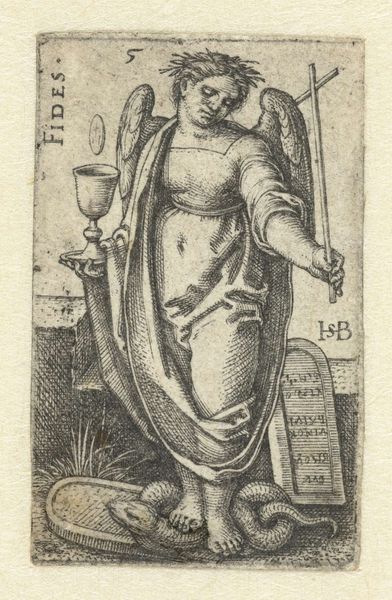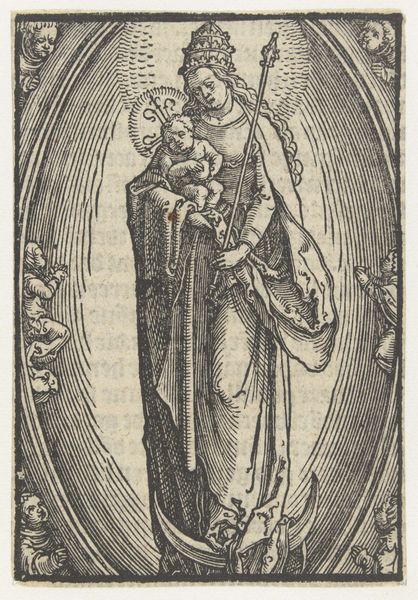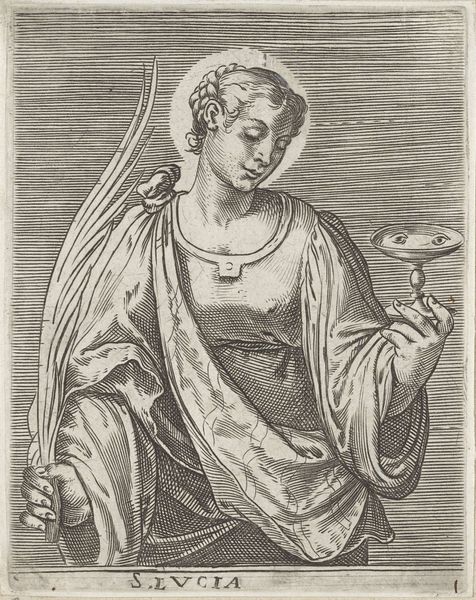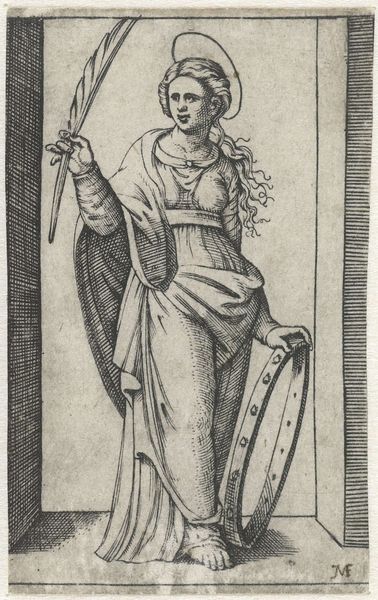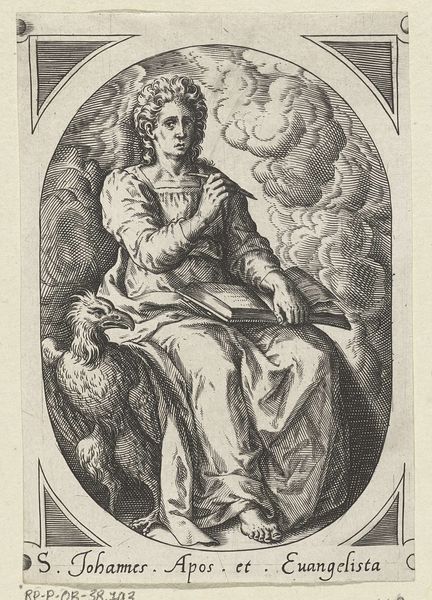
print, engraving
#
portrait
#
medieval
# print
#
figuration
#
line
#
history-painting
#
northern-renaissance
#
engraving
#
sword
Dimensions: height 96 mm, width 56 mm
Copyright: Rijks Museum: Open Domain
Curator: Looking at this engraving, “Heilige Catharina,” or “Saint Catherine,” we see an iconic representation of a medieval saint, attributed to the hand of Monogrammist AC from sometime between 1520 and 1562. The print is held here at the Rijksmuseum. Editor: My immediate reaction is that she appears surprisingly composed, given what I know of Saint Catherine’s story. The intricacy of the lines suggests a dense, detailed narrative, but her expression is so serene. Curator: Absolutely. That serenity is part of the carefully constructed iconography. Note the halo, the sword, and the book at her side—these are potent symbols. The sword represents her martyrdom, of course, and the book signifies her wisdom and learning. These emblems anchor her identity within a visual language understood by the audience. Editor: It’s fascinating how these objects coalesce to create meaning. The presence of the sword suggests violence and defiance, but the book, and more importantly her gaze, redirect our attention to intellectual strength. What does her elaborate headdress signify within this context? It feels intentionally emphasized. Curator: I think you are right to question that, it does more than merely communicate the context of the 16th Century Northern Renaissance! As a halo draws our eye to her divine and spiritual nature, so the very ornate, elevated head-piece suggests an elevation of status or place in society. Consider that within cultural memory and history, Saint Catherine was of noble descent. Editor: So, we have an aristocratic woman, but what are we to make of the print medium itself? It isn’t just an image, it’s an accessible object that democratized visual storytelling and would’ve placed it within the public sphere. How did these accessible depictions reshape her popular image? Curator: Mass production allowed this version of Catherine and all she represented to be disseminated to many. These symbols become amplified as people interpret her values and virtues as a result. So by seeing this repeatedly over time and geography we begin to see, collectively, shared human truths. Editor: That is really thought-provoking! So it isn't only about artistic creation, but the diffusion of social power by distributing archetypes within reach of the many. This makes one consider what "Heilige Catharina" signified across temporal and socio-economic circumstances when more people can access what it suggests! Curator: Exactly. And looking at it now, through that lens, helps us see her relevance today, not just as a religious figure, but as a symbol of resistance, knowledge, and power available to anyone!
Comments
No comments
Be the first to comment and join the conversation on the ultimate creative platform.
